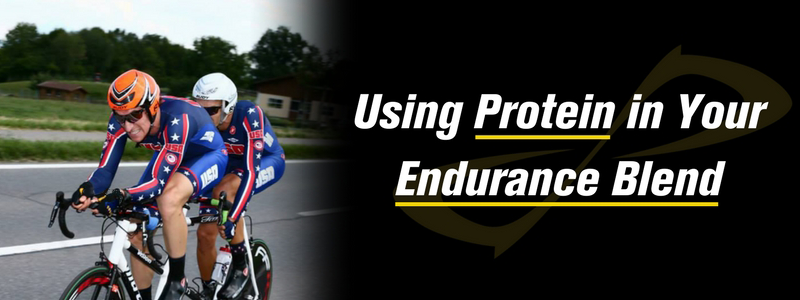Calculating Calorie Needs
- 20 May 2019

How to figure out how many calories you should be consuming each hour
One of worst things an athlete can do is try something new on race day, and nutrition is no exception. Developing a bullet-proof plan that you know has worked time and time again in training is going to give you some confidence and peace of mind going into a competition.

Knowing your energy needs is key to avoiding the dreaded bonk, and being able to go strong hour after hour. You also need to know your fluidneeds, so you can keep up with your sweat losses and avoid dehydration. With your fluid intake, comes the need for electrolytes to keep your blood ions in balance while you are taking in so much volume.
Here we tackle part one of this — Your energy needs. Namely, how many calories you need to take in per hour to stay fueled but not overload your gut.
How many calories do I need to take in?
We hear it all the time. It’s one of the biggest questions we get from athletes. So how does one figure out the amount of calories they need to perform during training or racing efforts?
Every athlete and body is unique, so this isn’t going to be a clear cut answer. Every athlete has their own individual needs based on training type and duration, as well as body size and composition.

Myth: Your goal should be calories out = calories in.
During exercise, an athlete is burning a ton of calories. Our bodies are simply not able to digest and absorb the same amount of calories per hour than we are burning, and trying to do so is a recipe for disaster in the form of gut overload, GI issues, and even the potential for these to cause you a dreaded DNF.

Instead you should be targeting an amount of calories each hour that your body is able to digest and absorb. Researchers found that 60-90 g of carbohydrates per hour is the maximum amount of carbs an athletes body can handle. The actual amount your body can handle is very dependent on a few factors. Adding multiple carbohydrates into a mixture allows for easier digestion and increased absorption (check out our Why Multiple Carbs article for more info).
We’ve been working with athletes to determine their calorie needs for over 15 years, and we’ve found a pretty much bulletproof equation. All you need are some basic data points.
Four Steps to Figuring Your Calories
Below is a step-by-step guide to help calculate the amount of calories that is able to be digested and absorbed per hour during all exercise.
- Figure out your approximate body fat %
If you haven’t had your body fat tested before, or don’t have this information on hand, you can determine your approximate BF% by using a chart like the one below:

- Multiply your current body weight by your body fat percentage to get pounds of body fat.
- Subtract pounds of body fat from your total body weight to get your approximate lean body mass.
- Calculate your calories based on activity type:
∞ Multiply your lean body mass by 2 for endurance events of over 3 hours.
∞ Multiply your lean body mass by 1.6 for running and sprint efforts of under 3 hours.
Voilà, there you have it! You have now calculated your approximate calorie needs for both endurance events and running/sprint efforts. This formula can be used for any athlete, male or female, from beginner to elite.
Figuring out the amount of calories per hour of exercise is very important to your overall success. Having your calories dialed in will make digestion easier and absorption faster, providing you with the energy needed to perform at your best.
Let's run through some examples...

Example 1: Joe the Cyclist
Joe is a cyclist, his main events are 50K, 100K, and 200K road races. During training Joe will incorporate shorter, higher intensity training sessions during the weekdays. On the weekends he will train with longer 4-6 hour rides. Joe is 45 years old, he weighs in at 180 pounds, and is 5’11”.
Here is how Joe calculated out the amount of calories needed per hour during exercise:
1: Age (45), height (5’11”), and weight (180 lbs)
Joe’s estimated body fat % is roughly 17%
2: Take the weight and multiply this by the body fat %.
180 lbs X .17 (17%) = 30.6 Joe has about 31 pounds of body fat.
3: Subtract the weight from the amount of body fat.
180 lbs - 31 lbs = 149 lbs Joe’s lean muscle mass is roughly 149 lbs.
4: Calculate calories based on activity level:
Multiply lean muscle mass by 2 for endurance (3+ hours)
149 lbs X 2 calories = 298 calories per hour
Multiply lean muscle mass by 1.6 for running/sprint efforts (under 3 hours)
149 lbs X 1.6 = 238 calories per hour
Joe plans to use his Endurance (for 3+ hour rides) and Speed blends (for shorter rides) during his training and racing. The blends are formulated to drink 1 serving (2 scoops) mixed into 20-24 ounces of water and consumed throughout the hour. Joe will plan to take a sip every 10 minutes to track his intake and finish a bottle every hour.
Example 2: Jane the Triathlete
Jane is an Ironman athlete, racing is both short and long course distances. Jane is 32 years old, stands 5’2” and weighs in at 120 pounds.
Let’s calculate Jane’s caloric needs:
1: Age (32), Height (5’2”), and weight (120 lbs)
Jane’s estimated body fat % is roughly 25%
2: Take the weight and multiply by the body fat %
120 lbs X .25 (25%) = 30 Jane has about 30 pounds of body fat
3: Subtract the weight from the amount of body fat
120 lbs - 30 lbs = 90 lbs. Jane’s lean body mass is roughly 90 lbs
4: Calculate calories based on activity level:
Multiple lean body mass by 2 for endurance (3+hours)
90 lbs X 2 calories = 180 calories per hour (increase to about 250 calories)
Important Note: An Endurance Blend (for efforts over 3 hours) should have a minimum of 60 grams of carbohydrates per serving. When using this calorie calculation method, some smaller female athletes may find this works out to be less than 60g. If this is the case, you should increase the calories up until you hit 60 grams of carbs per serving.
Multiply lean body mass by 1.6 for running/sprint efforts (under 3 hours)
90 X 1.6 calories = 144 calories per hour
Jane plans to use her Endurance Blend for the bike portion of both short and long course triathlons. She will use a Speed Blend for the run portion of the triathlon. During training she will use the Endurance Blend for any rides 2.5 - 3 hours of longer and the Speed blend will cover everything else.
Let Us Help
Still a little lost? We just so happen to have a full team of Registered Dietitians and INFINIT Formulation Specialists that are here to help with that.
We offer free (no-pressure) Custom Formula consultations. Work one-on-one with an INFINIT Formulation Specialist by phone or email to create or tweak your Custom Blends to fit your individual training & racing needs.
A consultation is also a good option for anyone who has questions about training nutrition, proper recovery, or if you have issues with GI distress or muscle cramping.
They can dial in your nutrition, explain the process, and answer any and all of your questions!
For a pre-mixed blend check out AJ Baucco's Low Calorie Blend!
About the Author
Blake Brauning, RD is a Registered Dietitian and Formulation Specialist. He has been with INFINIT Nutrition for over a year, and has quickly earned the title of the INFINIT Swiss Army Dietitian. Blake has held the role of Formulation Specialist, Interim Sponsorship Director, and has even recently jumped into some supportive Quality Control operations. Blake can always been found around food and is an exercise enthusiast, he enjoys the grit of crossfit and the exhaustion of conditioning.







